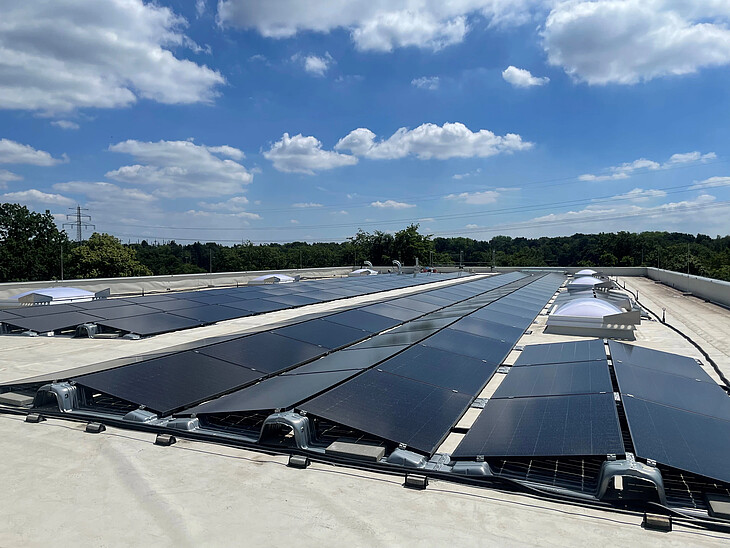Under optimal conditions – i.e. at module temperatures of 25°C and with ideal orientation – the system is able to provide a maximum output of 99.89 kilowatts. A system of this size can be expected to produce an average of roughly 90,000 to 120,000 kilowatt-hours (kWh) a year. This is enough electricity to power 20 to 25 homes.
Generate power, reduce emissions
Since it was launched in August 2024 – initially still operating at a reduced output – the system has produced 34.34 megawatt-hours (MWh) of electricity. This means that we have so far been able to reduce CO₂ emissions by roughly 12.48 tonnes.
The reduced emissions were calculated based on the average emission factor of the German electricity mix. According to the German Environment Agency (UBA), this was 363 grams of CO₂ per kilowatt-hour in 2024. In other words: this amount of CO₂ is reduced for every kilowatt hour of solar power generated when compared to conventional power generation.
